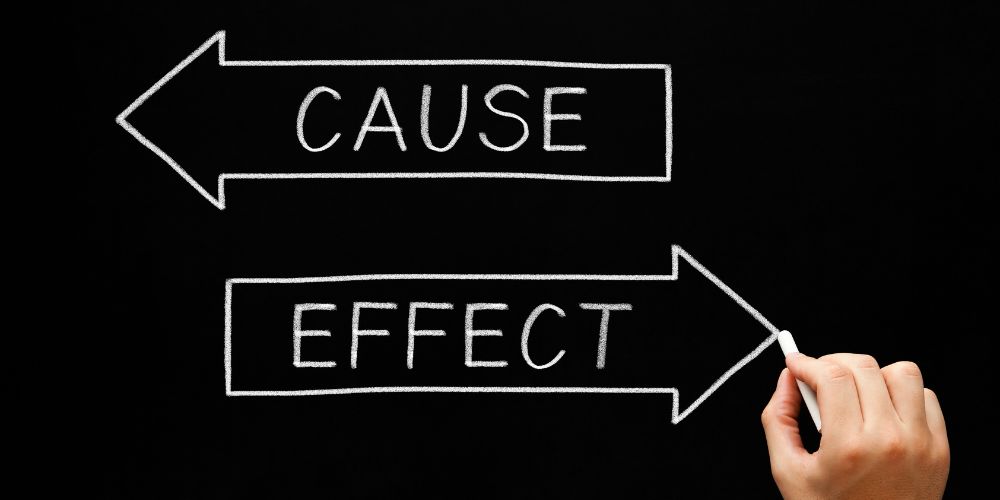In the panorama of written discourse, essays have carved a prestigious niche as a pivotal tool for articulating ideas, expressing thoughts, and presenting arguments.
Essays are not confined to academic spheres alone; they permeate various facets of professional and personal communication. They hold the potential to be both an art form and a science, amalgamating the craftsmanship of storytelling with structured, logical analysis.
What Are The Different Types Of Essays?
This comprehensive guide aims to elucidate the nuances of nine different types of essays, providing the foundation to harness their potential fully. You will discover each essay type’s intrinsic value and purpose as we venture through this guide.
Narrative Essays:

In the vast landscape of essay writing, narrative essays stand out as the storytellers of the literary world. These essays serve as a unique medium through which writers can artfully weave tales, whether drawn from personal experiences or imaginative realms.
Within the narrative essay, the very essence of storytelling thrives, characterized by elements such as characters, settings, and an intricately woven plot. Let’s delve into narrative essays, exploring their definition, purpose, types of essay writing, and structured narrative journey.
Definition: Crafted in the Art of Storytelling
Medium for Stories:
At its core, a narrative essay is a medium for sharing stories. These stories can be rooted in personal experiences, where the writer becomes the protagonist, or they can emerge from the depths of the writer’s imagination.
Elements of Storytelling:
arrative essays are rich with elements similar to classic literature. They introduce characters, settings, and, most importantly, a well-crafted plot that takes readers on a journey.
Drawing Readers In:
The power of narrative essays lies in their ability to draw readers into the narrative. The evocative and personal lens through which the story is presented ensures that readers observe and experience the writer’s world.
Purpose: Narration with Insight
Narrating Stories:
The core purpose of a narrative essay is to tell a story. However, it’s not just about recounting events; it’s about narrating a story infused with insightful observations and reflections.
Fostering Connection:
Narrative essays are bridges that connect writers and readers through shared emotions and narratives. They allow readers to walk in the author’s shoes, experiencing the ups and downs, joys and sorrows, and growth throughout the narrative.
Deeper Understanding:
Beyond mere entertainment, narrative essays offer a platform for exploring the human experience. They provide insights into the complexities of life, relationships, and personal growth, fostering a deeper connection with the reader.
Structure: Crafting the Narrative Journey
Introduction:
Setting the Stage: In the narrative essay’s chronological structure, the introduction serves as the stage-setter. It offers readers a glimpse into the unfolding narrative, sparking curiosity and anticipation. They are one of the popular types of college essays.
Body:The Crux of the Story:
The body paragraphs are the heart of the narrative. They are adorned with detailed accounts, dialogues, and a progressively unfolding plot.
Each paragraph is like a brushstroke, adding depth and color to the story’s canvas.
Conclusion: Resolving or Reflecting:
The well-rounded conclusion is the culmination of the narrative journey. It encapsulates the essence of the story, offering either a resolution to the plot or a poignant reflection.
It leaves readers with something to ponder upon, ensuring that the narrative lingers in their minds.
Narrative essays are the conduits through which stories flow from the writer’s heart to the reader’s soul. These types of essay formats are an art form that combines the craft of storytelling to share insights and emotions.
Descriptive Essays:

In the world of essay writing, descriptive essays emerge as the canvases where words transform into brushes, and writers become painters of emotions and imagery.
Definition
These essays are the essence of artistic expression in the realm of the written word, a medium that allows writers to craft sensory-rich experiences that resonate deeply with readers. Through descriptive essays’ purpose, structure, and essence, let’s embark on a sensory journey. They have different types of hooks for essays.
Purpose: Immersing the Reader
Sensory Overload:
At the heart of a descriptive essay lies the ambition to immerse the reader in the subject matter. It’s about going beyond mere words, aiming to create a sensory symphony where readers can not only visualize but also feel, hear, smell, taste, and touch the elements of the description.
Emotional Connection:
Descriptive essays are emotional time machines, capable of transporting readers to another time or place, stirring nostalgia, or evoking curiosity. Writers invite readers to forge a profound connection with the depicted subject by meticulously crafting the setting, characters, or objects.
Structure: The Craft of Description
Introduction: Setting the Stage:
Much like the opening act of a play, the introduction in a descriptive essay sets the stage. It introduces the subject and context, allowing readers to prepare for the sensory journey ahead mentally. It’s the curtain raiser, offering a glimpse of what lies within the narrative.
Body Paragraphs: Painting with Details:
The body paragraphs are the heart of the descriptive essay, where vivid descriptions and sensory details come to life. Each paragraph acts as a brushstroke, adding layers of color and texture to the canvas.
Writers carefully select adjectives, metaphors, and similes to create a clear and evocative image in the reader’s mind.
Conclusion: Leaving a Lasting Impression:
As the final act of the essay, the conclusion is tasked with summarizing the sensory symphony that unfolded in the body. It should leave readers with a lasting impression akin to the echo of a beautiful melody.
The conclusion reinforces the main points, ensuring that the subject’s essence lingers in the reader’s thoughts long after the essay concludes.
Expository essays are the torchbearers of knowledge, shedding light on subjects that may be shrouded in obscurity. They are the informative guides in essays dedicated to pursuing education and understanding.
Expository Essays:

In the vast spectrum of essay types, expository essays emerge as the educators of the essay family. These essays are informational powerhouses driven by the noble pursuit of explaining, informing, or clarifying a specific topic.
They are the beacons of clarity in a world of ambiguity, relying on the bedrock of facts, evidence, and logic to illuminate the subject matter.
Let’s explore the essence of expository essays, exploring their definition, purpose, and structured path to knowledge.
Definition: The Pillars of Information
Information-driven:
Expository essays are the repositories of information. They are meticulously researched and structured to present knowledge clearly and organized.
Clarity and Understanding:
These essays are designed to shed light on topics that may be complex or unfamiliar to the reader. They serve as guides, offering clarity and understanding in a world of information overload.
Reliance on Facts:
Expository essays stand firm on the foundation of facts and evidence. Opinions or biases do not sway them but rather adhere to the principles of objectivity and credibility.
Purpose: The Quest for Education
Conveying Knowledge:
The primary purpose of an expository essay is education. It seeks to convey knowledge to the reader, giving them a deeper understanding of the subject matter.
Demystifying Complexity:
Expository essays excel in demystifying complex concepts. They break intricate ideas into digestible components, ensuring readers can grasp even the most challenging topics.
Step-by-Step Explanations:
These essays often provide step-by-step explanations, guiding readers through processes, procedures, or theories. They offer a roadmap to comprehension.
Structure: Building the Path to Understanding
Introduction:
The Guiding Light: In the structure of an expository essay, the introduction serves as the guiding light. It introduces the topic and includes a concise thesis statement, setting the direction for the entire essay.
Body: A Treasure Trove of Information:
The body paragraphs are the heart of the expository essay, akin to a treasure trove of information. Each paragraph is dedicated to presenting facts, evidence, and examples that support the thesis.
Information is presented logically and organized, making it easy for readers to follow.
Conclusion: Reinforcing Knowledge:
The conclusion is the final brushstroke, reinforcing the understanding of the topic. It summarizes the key points, serving as a reminder of the knowledge gained throughout the essay.
Persuasive Essays:

In essay writing, persuasive essays emerge as advocates, using words’ power to sway opinions, influence actions, and plant the seeds of belief. These essays are akin to skilled lawyers presenting compelling cases to a jury, employing a combination of strong arguments and persuasive techniques.
Let’s delve into the world of persuasive essays, exploring their definition, purpose, and the structured path they follow to persuade and compel.
Definition: Masters of Persuasion
Advocates of Ideas:
Persuasive essays are the advocates of the essay world. They serve as passionate proponents of a specific viewpoint, cause, or idea, aiming to rally others to their side.
The Power of Persuasion:
These essays harness the power of persuasion, using compelling arguments and persuasive language to win over the reader. They are not merely informative but seek to create a persuasive impact.
Influence and Conviction:
Persuasive essays strive to influence the reader’s beliefs, attitudes, or behaviors. They seek to inspire conviction and action, motivating readers to adopt the author’s perspective.
Purpose: Shaping Opinions and Actions
Swaying Opinion:
The core purpose of a persuasive essay is to sway the reader’s opinion. It’s like a skilled debater presenting a compelling case, aiming to tip the scales of belief in their favor.
Motivating Action: Beyond changing opinions, persuasive essays often seek to motivate readers to take specific actions. They inspire individuals to move from passive agreement to active engagement.
Planting Belief:
These essays plant the seeds of belief, nurturing them with well-crafted arguments and evidence until they take root in the reader’s mind.
Structure: The Persuasive Path
Introduction: Capturing Attention:
In the structured approach of persuasive essays, the introduction is the attention-grabber. It introduces the topic and presents a concise thesis statement, setting the stage for the persuasive journey.
Body: The Arsenal of Persuasion:
The body paragraphs house the arsenal of persuasion. Each paragraph contains a persuasive argument supported by evidence, examples, and counterarguments. These arguments are carefully crafted to build a compelling case.
Conclusion: A Lasting Impression:
The conclusion is the final, powerful appeal. It summarizes the main arguments and leaves a lasting impression. It urges the reader to take action or seriously consider the author’s viewpoint, ensuring the persuasive impact endures.
Persuasive essays are the champions of influence, wielding the tools of persuasion to shape opinions and inspire action.
Compare and Contrast Essays:

In the diverse landscape of essay writing, compare and contrast essays stand out as juxtaposition artists. These essays are masterpieces that intricately analyze and highlight the similarities and differences between two or more subjects, offering readers valuable insights into their relationships.
Let’s delve into the world of compare and contrast essays, examining their definition, purpose, and the structured path they follow to illuminate the connections and disparities between subjects.
Definition: The Art of Juxtaposition
Analyzing Relationships:
Compare and contrast essays are the architects of analysis. They engage in the art of comparison, placing subjects side by side to dissect their similarities and differences.
Unveiling Connections:
These essays unveil the hidden connections and disparities between subjects, revealing intricate relationships that may not be immediately apparent.
Deeper Understanding: Through comparison, readers gain a deeper understanding of the subjects under scrutiny. These essays offer a lens through which to view the world more nuanced and comprehensively.
Purpose: Illuminating Perspectives
A Deeper Understanding:
The core purpose of a compare and contrast essay is to provide readers with a more profound understanding of the subjects in question. They go beyond surface-level observations to uncover the essence of each subject.
Identifying Commonalities:
These essays help readers identify commonalities between subjects, emphasizing shared characteristics or themes that may not have been evident initially.
Exploring Disparities:
Simultaneously, compare and contrast essays explore disparities, shedding light on differences that contribute to a comprehensive perspective on the topic.
Structure: The Balanced Comparison
Introduction: Setting the Stage:
The introduction acts as the stage-setter in comparing and contrasting essays’ structured format. It introduces the subjects to be compared and clearly states the purpose of the comparison, giving readers a roadmap for what lies ahead.
Body Paragraphs: Analyzing Specifics:
The body paragraphs are the heart of the essay. Each paragraph is dedicated to examining specific aspects, characteristics, or themes of the subjects. These paragraphs provide a balanced comparison, highlighting both similarities and differences.
Conclusion: Summarizing Nuances:
The final brushstroke summarizes the key similarities and differences unveiled throughout the essay. It leaves readers with a nuanced perspective, encouraging them to reflect on the intricate relationships between the subjects.
Compare and contrast essays are the artisans of analysis, carefully juxtaposing subjects to unveil their intricate relationships. As readers journey through the introduction, body, and conclusion, they gain a deeper understanding of the subjects and the world around them.
Cause and Effect Essays:

In the vast landscape of essay writing, cause and effect essays stand out as the detectives, wielding the analytical magnifying glass to investigate the underlying reasons (causes) behind specific events or phenomena and the subsequent outcomes (effects) that ripple through time.
These essays aim to unravel the intricate connections between actions and consequences, serving as the investigative agents in the essay realm. Let’s dive deeper into the world of cause and effect essays, examining their definition, purpose, and the structured path they follow to unveil the web of causality.
Definition: The Detectives of Causality
Analyzing Causality:
Cause and effect essays are the analytical minds that delve into the heart of causality. They dissect the relationships between actions and their repercussions.
Unraveling Connections:
These essays unravel intricate webs, shedding light on the complex cause-and-effect relationships that drive events and phenomena.
Understanding Consequences:
Through their investigations, cause and effect essays aim to clearly understand the consequences that flow from specific actions or occurrences.
Purpose: Uncovering the Why and What
Explaining the Why:
The core purpose of a cause-and-effect essay is to explain why something happened. It dives deep into the causative factors behind an event or phenomenon, seeking to answer the fundamental question of why it occurred.
Revealing the What:
In addition to explaining the why, these essays also explore what happened due to the identified causes. They trace the ripple effects and outcomes, illuminating the broader impact of the initial events.
Insights into Causality:
Cause and effect essays offer valuable insights into the chain of events that lead to specific outcomes. They give readers a comprehensive grasp of causality, encouraging a deeper understanding of the world.
Structure: The Logical Sequence
Introduction: Setting the Stage:
The introduction sets the stage in the structured format of cause-and-effect essays. It introduces the event or phenomenon under investigation, emphasizing its significance and the questions it raises
Body Paragraphs: Investigating Causes and Effects:
The body paragraphs are investigative files. Each paragraph delves into specific causes and effects, presenting them logically. These paragraphs are carefully crafted to establish the cause-and-effect relationships.
Conclusion: Summarizing Significance:
The conclusion is the closing statement of the investigation. It summarizes the main causes and effects, emphasizing their significance and the broader understanding they bring to the event or phenomenon.
Cause and effect essay are the detectives of the essay realm, meticulously investigating the connections between actions and consequences.
Argumentative Essays:

Argumentative essays emerge as the debaters, engaging in intellectual discourse by presenting a clear argument fortified by evidence and logical reasoning. These essays boldly defend a specific position on a controversial topic, designed to provoke critical thinking and spark discussion among readers.
Let’s delve into the types of argumentative essays, examining their definition, purpose, and the structured path they follow to ignite thoughtful debate.
Definition: The Debaters of Ideas
Art of Persuasion:
Argumentative essays advocate ideas, employing the art of persuasion to make a compelling case for a particular viewpoint.
Evidence and Reasoning:
These essays rely on robust evidence and logical reasoning to build their arguments. They are not merely opinions but rather well-supported claims.
Intellectual Discourse: Argumentative essays foster intellectual discourse by presenting a clear argument and inviting readers to engage in a thoughtful debate on the topic at hand.
Purpose: Persuasion Through Reasoning
Persuading the Reader:
The core purpose of an argumentative essay is to persuade the reader to agree with the author’s viewpoint or take a specific course of action. It’s like a skilled debater aiming to win over an audience.
Provoking Critical Thinking:
Beyond persuasion, these essays provoke critical thinking. They challenge readers to consider multiple perspectives and analyze deeper topics.
Spark Discussion: Argumentative essays are designed to spark discussion and debate, encouraging readers to delve into the issues and form informed opinions.
Structure: The Path to Persuasion
Introduction: Stating the Thesis:
The introduction plays a pivotal role in the structured approach of argumentative essays. It introduces the topic, presents a clear argumentative thesis, and sets the stage for the debate.
Body Paragraphs: Building the Case:
The body paragraphs are the battleground of ideas. Each paragraph presents a unique argument or counterargument supported by evidence and logical reasoning. These paragraphs build a solid case for the author’s viewpoint.
Conclusion: A Compelling Closure:
The conclusion is the closing statement in the debate. It summarizes the main arguments, restates the thesis, and makes a compelling closing statement that lingers in the reader’s mind, leaving a strong impression.
Analytical Essays:

Analytical essays serve as the dissectors of the literary and academic realms. These essays specialize in examining a subject by systematically breaking it into its fundamental components and meticulously analyzing them. They are among the most popular 3 types of essays.
They aim to offer readers a deeper understanding of complex topics by providing an in-depth analysis of the elements that constitute them.
Definition: The Anatomy of Analysis
Deconstructing Subjects:
Analytical essays are the experts in deconstruction. They meticulously break down a subject into its constituent parts, whether a piece of literature, a scientific theory, or a historical event.
Systematic Examination:
These essays employ systematic examination, precisely diving into each component or aspect. They are unsatisfied with surface-level observations but aim to unearth the intricacies beneath the surface.
Illuminating Complexity: Through their analysis, analytical essays illuminate the complexity of a subject, revealing how its various elements interconnect and contribute to the whole.
Purpose: Unveiling Depth and Understanding
Deepening Understanding:
The core purpose of an analytical essay is to provide readers with a deeper understanding of a subject. It goes beyond mere description or summary to offer insights into the inner workings and relationships of the elements.
Facilitating Comprehension:
Analytical essays facilitate comprehension by breaking complex topics into digestible parts. They make the abstract tangible and the convoluted comprehensible.
Fostering Critical Thought:
These essays foster critical thinking by encouraging readers to question, analyze, and draw conclusions based on the presented analysis.
Structure: A Systematic Approach
Introduction: Setting the Stage:
In the structured approach of analytical essays, the introduction serves as the stage-setter. It introduces the subject, provides a clear focus for the analysis, and sets the tone for what readers can expect.
Body: Delving into Components:
The body paragraphs are the laboratories of analysis. Each paragraph is dedicated to examining a specific component or aspect of the subject. The systematic and thorough analysis aims to uncover the nuances and relationships.
Conclusion: Summarizing Insights:
The conclusion is the synthesis of the analysis. It summarizes the key findings and insights that have emerged throughout the essay, offering readers a clear takeaway. You need to be vigilant to construct an effective ending to any type of essay.
Critical Essays:

Critical essays are the evaluators, interpreters, and critics in literature, art, and media. These essays offer thoughtful analyses and judgments of a literary work, artwork, or media piece. They aim to provide a nuanced exploration of the subject, dissecting its strengths and weaknesses. These types of essays in college are popular.
Definition: The Evaluators of Expression
Evaluative Expertise:
Critical essays are the experts in evaluation. They apply discerning judgment and interpretation to assess the quality and significance of a subject.
Interpretive Insight:
These essays go beyond surface-level analysis to offer interpretive insights into the subject. They delve into the meaning, context, and impact of the work or media.
Balanced Critique:
Critical essays maintain a balance between critique and appreciation. They acknowledge the strengths while highlighting the weaknesses, providing a comprehensive assessment.
Purpose: Offering Insightful Analysis
Thoughtful Analysis:
The core purpose of a critical essay is to offer a thoughtful and comprehensive analysis of the subject. It explores the nuances, themes, and artistic or literary elements in depth.
Understanding Significance:
Critical essays seek to understand the subject’s significance, whether it’s a piece of literature that has stood the test of time or a contemporary artwork with cultural relevance.
Encouraging Discourse:
These essays encourage discourse by presenting a nuanced and informed perspective. They invite readers to engage with the subject critically and form their own opinions.
Structure: The Art of Evaluation
Introduction: Presenting the Subject:
In the structured approach of critical essays, the introduction introduces the subject and establishes the focus of the critique. It sets the stage for the analysis to come.
Body: Analyzing and Evaluating:
The body paragraphs are the arena for analysis and evaluation. Each paragraph explores a different aspect of the subject, presenting an analysis of its strengths and weaknesses.
Conclusion: Summarizing the Critique:
The conclusion is the culmination of the critical assessment. It summarizes the key points of analysis and offers final thoughts, leaving readers with a comprehensive understanding of the subject’s merits and shortcomings.
Faqs
What is the key to writing a successful essay?
The key to a successful essay is a well-structured and coherent argument supported by evidence and clear writing. Enhance your knowledge about types of hooks for essays.
How can I improve my essay’s clarity and readability?
Use concise language, varied sentence structures, and well-organized paragraphs to enhance clarity and readability.
What should I do if I struggle to find sources for my research essay?
If you’re having trouble finding sources, expand your search to academic databases, libraries, and reputable online resources.
How can I avoid plagiarism in my essays?
To avoid plagiarism, always correctly cite your sources and use quotation marks for direct quotes from other authors.
What Types Of Essays Are There?
There are several types of essays, including narrative, descriptive, expository, persuasive, compare and contrast, cause and effect, argumentative, analytical, and critical essays.
Which Type Of Essay Relies On Sensory And Feeling Words?
Descriptive essays rely on sensory and feeling words to create vivid and immersive descriptions.
In a Nutshell:
In this all-encompassing guide, we’ve embarked on a journey through nine unique essay genres, each possessing its distinctive purpose, structure, and types of essay hooks. Whether you find yourself weaving narratives, shedding light through expository prose, or engaging in persuasive discourse, this guide has furnished you with the knowledge and resources to excel in essay writing.
Always bear in mind that the gateway to mastery in these diverse forms lies in practice and a profound comprehension of your audience and objectives. So, let your writing journey commence with a pen or keyboard ready.
However, if you still find essay writing challenging, My Essay Writer can take care of it for you. All types of essays high school assigned you can be done effortlessly. From a synthesis essay to bringing critical thinking in essay writing. Happy writing!


